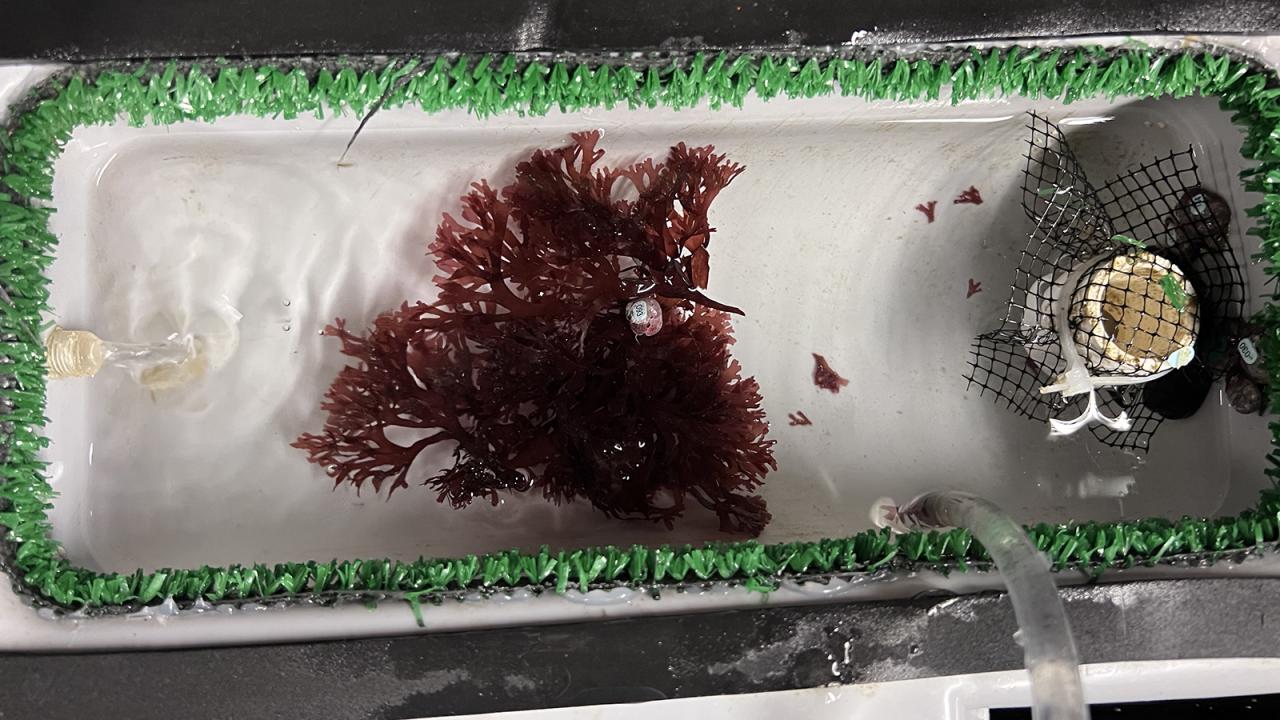
A Summer with Abalone and Research
Kordi Kokott is a biology student who recently graduated from the SRJC with an Associates in biology. She’s moving on to become a student at UC Davis to get her bachelor’s in biotechnology. She was an intern at the Bodega Marine Lab in the summer of 2022 and was mentored by Sara Boles.
This summer, I actually got to work on two different experiments – one where I helped to set up an experiment, and one where I analyzed data. The first experiment was a nutritional analysis – examining how dulce cultivated at different temperatures would affect the growth and health of two different ages of juvenile abalone. The other experiment I worked on was examining the transgenerational effects of ocean acidification on abalone. For this experiment, I came in as it was almost finished and simply did data analysis.
For the first experiment I helped to set it up, since the actual experiment would run much longer than my stay at the BML. Throughout the time that I spent setting up this experiment I learned a lot about the process behind the science. Making an experiment isn’t necessarily a straightforward process, where you simply have an idea and then execute it. Oftentimes, there are twists and turns along the way. We started out using one container, and then switched to another kind that would work better. We didn’t have the right size of mesh at first, so we had to go out and find some. Our small abalone kept dying, so we had to get a new shipment of them so that it wouldn’t present a confounding factor. All of this happened but still, the experiment went on, because we found ways to solve them. I was able to learn how essential the ability to be flexible and innovative is to science, and that kind of hands-on experience is priceless to a budding scientist.
For the second experiment – I had another unique experience: I processed data. Essentially, I examined abalone in photos that had been taken previously and found the area and length of their shell. I didn’t actually do much with this data – my mentor is the one that created figures and the one that did all the real work analyzing it. All I did was draw circles and lines on the screen with a computer mouse. It was boring, tedious, and time consuming - but it was also essential. Examining shell length and size of 495 abalone (yes, I counted) showed me something else about science – it might not always be exciting, but without the somewhat tedious parts, you never can reach any conclusions.
Throughout my summer journey at the bodega marine lab, I got to see all sides of science and research. I got to do hands on work, see an experiment get started, and I got to hold an abalone (which was a pretty cool experience). Overall, my time at the BML was in a word, amazing. I feel like I really contributed to something, and my understanding of the scientific process is much broader than it used to be.
Want to learn more about the SRJC-BML Internship Program?
Visit the SRJC-BML Internship Program Website
You can also show your support for this program by making a gift.
